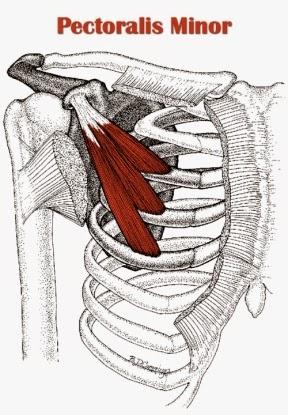Much like yawning, posture is a contagious act. Oftentimes just talking about posture causes others to sit tall in their chairs and draw their shoulder blades together. This is a phenomenon that I have coined as “subliminal posture.” Go ahead and try it; mention to your friends that you are working on improving your posture and watch as they instantly correct their own slumpy stance right before your eyes. As if they can improve posture simply by trying harder.
A common fallacy about posture is that we can control it through our own volition. This could not be further from the truth. No amount of willpower can fix our posture. As bipedal species, we succumb to the weight of gravity as we slouch into whichever posture is most comfortable and conserves the most energy. It is human nature to follow the path of least resistance, and unfortunately it takes muscular effort to sit or stand with good posture. This is why it is common to slouch even when sitting in the most ergonomic chairs.
Instead of trying to will ourselves to sit taller, we must develop our posture through unconscious means. What does this mean? It means that posture is a state of being and not something that we can simply make happen. We do not choose our posture, our posture is driven by the sum of daily activities (or lack of) that we participate in. Posture is the result of unconscious physical characteristics; strength, joint mobility, and movement patterns all contribute to how we carry ourselves. Therefore, to improve our posture we must train each of these characteristics. More specifically we must harness the power of subconscious movement by training the neuromuscular system (NMSK).
The neuromuscular system is the driver of all human movement. It refers to the sum of all muscles and the nerves that serve them. This system is what creates muscle tone as well as motor control, strength, and biomechanical movement patterns. An important concept to understand is that the NMSK system can only recognize tension. This means that posture is directly driven by whether or not muscles are stiff or weak. Good posture relies on a balance of strength and mobility. For every joint there is an agonist and antagonist muscle; think pectoralis versus rhomboids surrounding the shoulder joint. In order to maintain efficient posture, every joint in the body must have a proper ratio of tension and mobility. We see poor posture develop when a joint has improper strength and mobility ratio. For example, if the pectoralis minor and coracobrachialis muscles have become short and tight due to a desk bound job, the tendency will be to pull the coracoid process forward (rounded shoulders). The result is a shoulder blade that tips forward. If the antagonist muscles (rhomboids and lower trapezius) do not carry enough tension, then scapular winging will develop. The remedy is not to sit tall or get an ergonomic chair. The remedy is to develop tension of the scapular retractors and to release the anterior chain muscles thus restoring a good tension to mobility ratio.
How to Harness The Power of the Neuromuscular System
We all know how to develop the muscular system; strength train, perform aerobic work, and stretch. What most do not know is how to develop the neuromuscular system. For the neuromuscular system to be properly trained we must put our body is better movement patterns. This means we must choose body positions that cause good movement. This may look as simple as standing at your workstation as opposed to sitting for 8 hours. Standing unknowingly causes us to activate the posterior chain (soleus, hamstring, erector spinae) as our body fights to stay upright. Choosing to stand more often than sitting is the most simple activity we can do to fix our posture. Another great tool is to take frequent walk breaks within the work day. Walking is an excellent total body exercise that forces dissociative movement between the shoulders and pelvis. Instead of sitting for your lunch break choose to do a brisk 10 minute walks; this increases the heart rate and works both agonist and antagonist muscle groups. A final thought is to structure variability into your workout. Do not fall victim to the training program that performs the same exercises day in and day out. This is most common with aerobic athletes who choose to run, bike, or swim every day of the week. Our NMSK system craves variability in order to be challenged. Cross training one or two times a week is a great addition to challenge the NMSK system.
The take away from this post is that posture must be trained in a subconscious manner. It is a common fallacy to think that a few exercises performed once or even two times a day will reverse poor posture. Do not give yourself to much credit, good posture is as difficult to achieve as weight loss. If you are interested in learning the most comprehensive approach to fix your posture download our NEPT App and try out some of the variable workouts routines we have created.



0 Comments